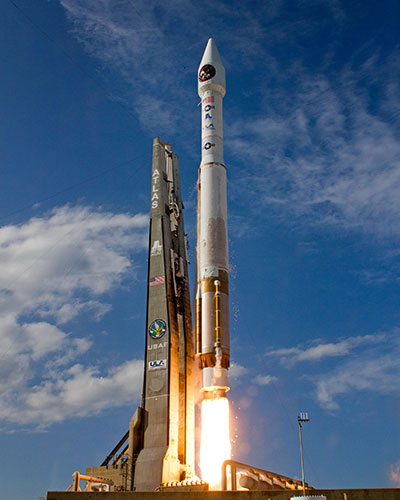A United Launch Alliance (ULA) Atlas V rocket successfully launched the second Space-Based Infrared System (SBIRS) GEO-2 satellite for the U.S. Air Force at 5:21 p.m. EDT today from Space Launch Complex-41. ULA launched the first satellite in the constellation, GEO-1, aboard and Atlas V on May 7, 2011.
This was the 3rd ULA launch of the year, the 37th Atlas V mission, and the 69th ULA launch since the company was formed in December 2006.

Credit: Pat Corkery, United Launch Alliance"The ULA team is honored to serve a pivotal role in placing this critical capability in orbit for our women and men serving around the world and protecting our freedom,” said Jim Sponnick, ULA vice president, Mission Operations. “From nearly two years ago when we began production of the launch vehicle, through today’s successful mission delivery, this very strong and well-integrated government and industry team has ensured that mission success remains the highest priority at every step in the process.”
This mission was launched aboard an Atlas V 401 Evolved Expendable Launch Vehicle (EELV), which includes a 4-meter diameter payload fairing. The booster for this mission was powered by the RD AMROSS RD-180 engine and the Centaur upper stage was powered by a single Pratt & Whitney Rocketdyne RL-10A engine.
SBIRS is a consolidated system intended to meet United States infrared space surveillance needs for decades to come. The SBIRS program addresses critical warfighter needs in the areas of missile warning, missile defense, technical intelligence and battlespace characterization.
The EELV program was established by the United States Air Force to provide assured access to space for Department of Defense and other government payloads. The commercially developed EELV Program supports the full range of government mission requirements, while delivering on schedule and providing significant cost savings over the heritage launch systems.
ULA program management, engineering, test, and mission support functions are headquartered in Denver, Colo. Manufacturing, assembly and integration operations are located at Decatur, Ala., and Harlingen, Texas. Launch operations are located at Cape Canaveral AFS, Fla., and Vandenberg AFB, Calif.













